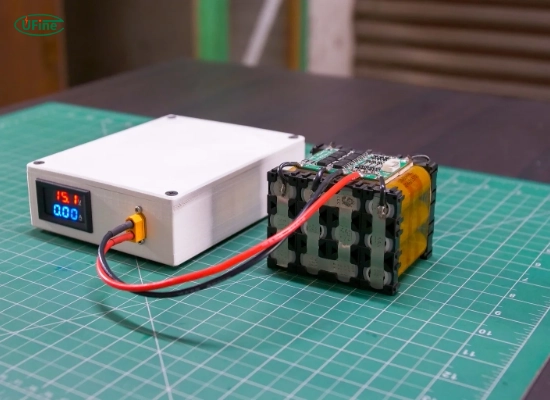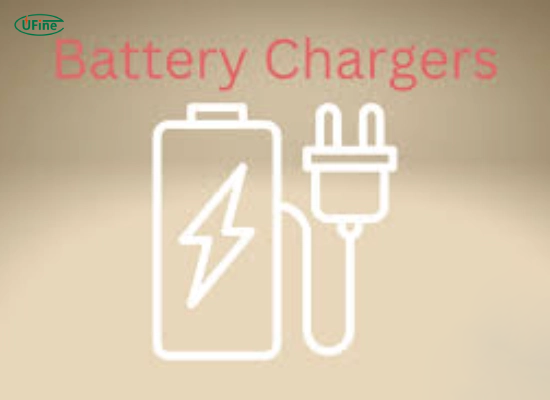Lithium battery chargers are crucial in ensuring lithium batteries’ safe and efficient charging. Recognizing the nuances and factors in selecting the correct charger is pivotal for maximizing battery life and performance. This article delves into the considerations essential for choosing an optimal lithium battery charger tailored to specific needs.
Part 1. How to choose a lithium battery charger?
Choosing the suitable lithium battery charger involves considering several critical factors to ensure optimal performance and safety for your specific battery and device needs.
Battery Compatibility
When choosing a charger, matching its specifications with your battery’s requirements is paramount. Check the battery chemistry, voltage, and capacity to ensure compatibility. An incompatible charger can lead to inefficient charging, reduced battery lifespan, or damage.
Voltage and Current Ratings
Verify that the charger’s output voltage matches the battery’s voltage requirement. Consider the charger’s current output—it should meet or exceed the battery’s charging current threshold. A mismatched voltage or inadequate current can hinder efficient charging and harm the battery.
Charging Speed and Time
Evaluate your preferences regarding charging speed. Fast chargers might be appealing for quick replenishment but may impact the battery’s long-term health. Balance your need for speed while preserving the battery’s lifespan by choosing a charger with an appropriate charging rate.
Safety Features
Prioritize chargers equipped with safety mechanisms. Look for features like overcharge protection, temperature control, and short-circuit prevention. These safeguards ensure a secure charging process, reducing risks associated with lithium batteries.
Portability and Convenience
Consider your lifestyle and usage patterns. If mobility is crucial, opt for a portable charger that suits your needs. Assess the charger’s size, weight, and compatibility with different power sources to ensure convenience, especially for travel or outdoor activities.
Advanced Features
Explore chargers with additional functionalities, such as intelligent charging capabilities, LED indicators for charging status, or compatibility with various battery chemistries. These advanced features can enhance the charging experience and battery management.
Part 2. What are lithium battery chargers?
Basic Principles of Lithium Battery Charging
Voltage and Current Regulation
Lithium battery chargers control the voltage and current supplied to the battery during the charging process. This control ensures that the battery receives the appropriate levels of electrical energy without surpassing its safe limits, preventing overcharging or undercharging scenarios.
CC-CV Charging Method
Commonly employed in lithium-ion battery charging, the Constant Current-Constant Voltage (CC-CV) charging method involves two stages. A constant current is supplied to the battery until it reaches a predefined voltage threshold. Then, the charger maintains a constant voltage while decreasing the current, ensuring a gradual and controlled charge.
Battery Protection Mechanisms
These chargers incorporate safety features like temperature monitoring, overcharge protection, and short-circuit prevention. Temperature sensors ensure that the battery doesn’t overheat during charging. At the same time, overcharge protection prevents excessive charging, safeguarding the battery from potential damage.
Components and Functionality
Control Circuitry
Lithium battery chargers contain sophisticated control circuitry responsible for monitoring the charging process. This circuitry adjusts voltage and current output based on the battery’s state and requirements, ensuring safe and optimized charging.
Transformer and Rectifier
In AC-powered chargers, a transformer and rectifier convert alternating current (AC) from the mains into direct (DC), which is suitable for charging the battery.
Voltage Regulator
Chargers include voltage regulation components to maintain a steady and safe voltage output required for charging the lithium-ion battery, preventing voltage spikes or drops that could damage the battery.
Part 3. Types of lithium battery chargers
1. Basic Wall Chargers
Basic wall chargers, commonly provided with devices upon purchase, offer a straightforward and convenient way to charge lithium-ion batteries. They are typically designed to deliver a specific voltage and current output suitable for the intended device. While these chargers are simple and cost-effective, they often lack advanced features for optimal battery management.
2. Smart Chargers
Intelligent chargers, a more advanced category, employ sophisticated technology to enhance the charging process. These chargers incorporate intelligent algorithms and microprocessors to monitor and regulate the charging cycle actively. They analyze the battery’s condition, dynamically adjusting voltage and current levels to optimize charging efficiency. Smart chargers often offer voltage balancing among cells, temperature monitoring, and overcharge protection, ensuring safer and more efficient charging while prolonging battery life.
3. Portable Chargers
Portable chargers, also known as power banks, cater to the need for on-the-go charging. These chargers come in various sizes and capacities, offering portability and convenience for charging devices outside traditional power sources. From small, pocket-sized units to more significant, high-capacity models, portable chargers utilize rechargeable lithium batteries and often feature multiple output ports, enabling simultaneous charging of various devices. They are famous for travel, outdoor activities, and emergencies due to their versatility and ability to provide power in remote locations.
4. Solar Chargers
Solar chargers harness solar energy to charge lithium-ion batteries. These chargers consist of solar panels that convert sunlight into electrical energy, which is then used to charge the battery. They offer a sustainable and eco-friendly charging solution, particularly useful in outdoor settings with limited access to traditional power sources. However, their charging speed can vary based on sunlight availability and the efficiency of the solar panels.
5. Wireless Chargers
Wireless chargers provide a cable-free charging experience by utilizing electromagnetic induction to transfer energy to the battery. Users place their compatible device on the charging pad or stand, and the charger transmits power to the device’s internal battery. While convenient, wireless chargers may have slower charging speeds than wired chargers and require precise alignment between the charger and the device for efficient charging.
Part 4. FAQs
-
What charger is best for a lithium battery?
The best charger for a lithium battery is a charger specifically designed for that battery’s chemistry and voltage requirements. Using a charger recommended by the battery manufacturer that aligns with the battery’s specifications ensures safe and efficient charging. -
What is the optimal charging for a lithium battery?
Optimal charging for a lithium battery involves charging it to around 80% to 90% of its total capacity for regular usage. Avoiding full 100% charges and deep discharges helps maintain the battery’s health and extends its lifespan. -
What is the 40-80 rule for lithium-ion batteries?
The 40-80 rule suggests maintaining the charge of a lithium-ion battery between 40% and 80% of its capacity for optimal battery health. Keeping the charge within this range reduces stress on the battery and helps prolong its lifespan. -
Why is it wrong to charge a lithium battery to 100%?
Charging a lithium battery to 100% can cause stress on the battery cells, leading to increased internal reactions that degrade the battery’s health over time. Total charges accelerate aging and reduce the overall longevity of the battery. -
Do I need a special charger for a LiFePO4 battery?
Yes, it’s advisable to use a charger specifically designed for LiFePO4 batteries. These batteries have different voltage and charging characteristics than other lithium chemistries, requiring a charger tailored to their specifications for safe and efficient charging.
Related Tags:
More Articles

LiPo Battery Discharge Rate Guide & Calculation Tips
Understand LiPo battery discharge rates, C-ratings, and how to calculate max current. Essential guide for RC, drones, and electronics users.
High‑Capacity 3S LiPo Batteries: 5000 mAh vs. 10000 mAh
Compare 3S LiPo 5000mAh vs 10000mAh batteries by weight, power, and use. Find the best fit for your drone, RC car, or boat setup.
Top 5 Applications for Small 3S LiPo Batteries
Small 3S LiPo batteries power drones, RC gear, wearables, and robotics with high energy and low weight. Making them ideal for compact electronics projects.
Building and Charging Your Own 3S LiPo Pack: A Step‑by‑Step Guide
Learn how to build, balance, and charge a 3S LiPo battery pack safely at home with this complete DIY guide for hobbyists and beginners.
How to Choose the Right LiPo Battery Plug Type?
Discover the best LiPo battery plug types, how to choose them, and expert tips for safe usage, soldering, and maintenance.





